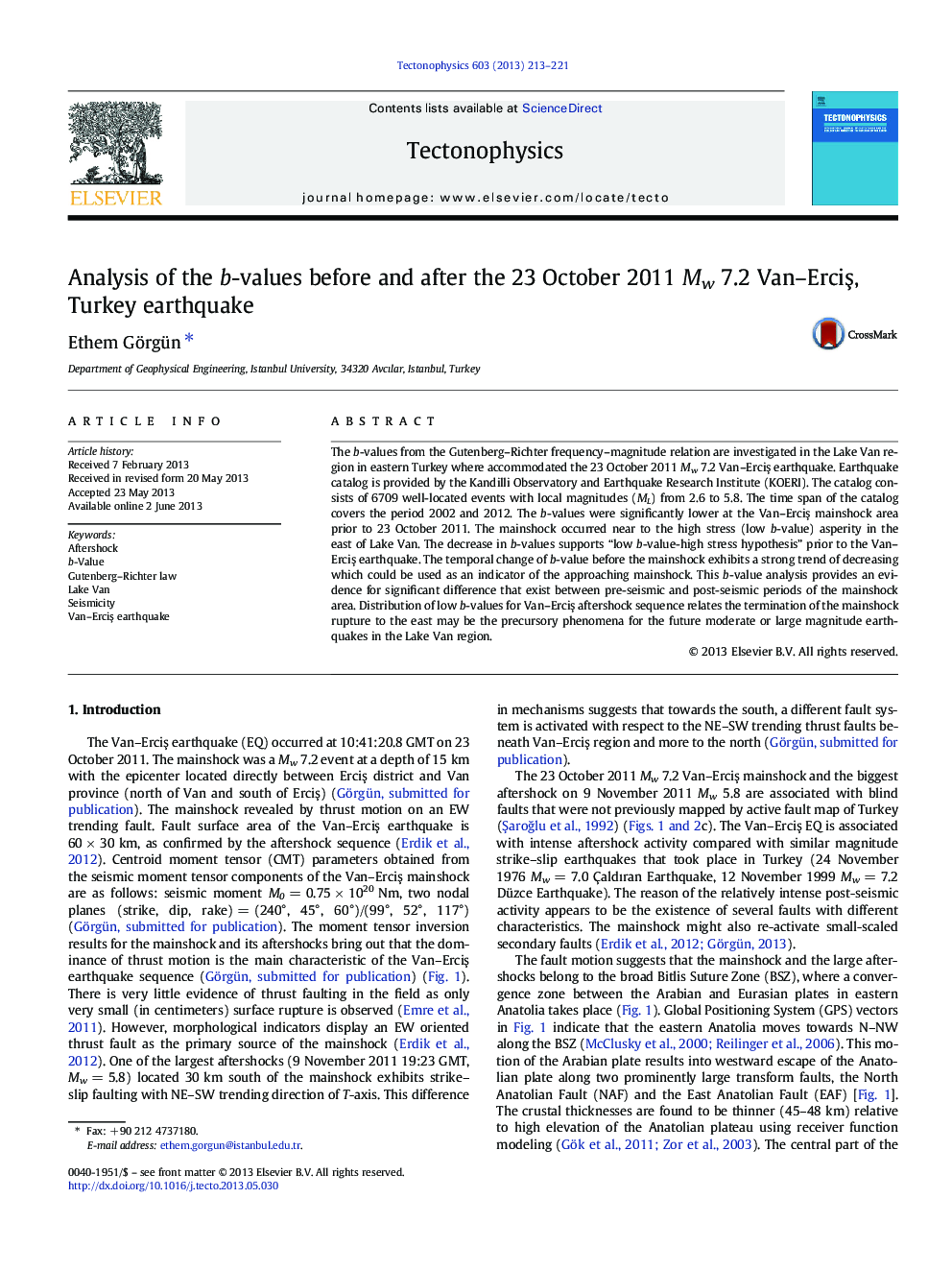| Article ID | Journal | Published Year | Pages | File Type |
|---|---|---|---|---|
| 4692202 | Tectonophysics | 2013 | 9 Pages |
•Spatio-temporal variations in b-values before and after the Van–Erciş EQ are studied.•High b-values are interpreted in terms of reactivation of asperity zones.•Low b-values may be a possible precursor heralding an arrival of the Van–Erciş EQ.•Preparation process of the Van–Erciş Mw 7.2 EQ is examined.•A numerical simulation to validate the b-value variations is done.
The b-values from the Gutenberg–Richter frequency–magnitude relation are investigated in the Lake Van region in eastern Turkey where accommodated the 23 October 2011 Mw 7.2 Van–Erciş earthquake. Earthquake catalog is provided by the Kandilli Observatory and Earthquake Research Institute (KOERI). The catalog consists of 6709 well-located events with local magnitudes (ML) from 2.6 to 5.8. The time span of the catalog covers the period 2002 and 2012. The b-values were significantly lower at the Van–Erciş mainshock area prior to 23 October 2011. The mainshock occurred near to the high stress (low b-value) asperity in the east of Lake Van. The decrease in b-values supports “low b-value-high stress hypothesis” prior to the Van–Erciş earthquake. The temporal change of b-value before the mainshock exhibits a strong trend of decreasing which could be used as an indicator of the approaching mainshock. This b-value analysis provides an evidence for significant difference that exist between pre-seismic and post-seismic periods of the mainshock area. Distribution of low b-values for Van–Erciş aftershock sequence relates the termination of the mainshock rupture to the east may be the precursory phenomena for the future moderate or large magnitude earthquakes in the Lake Van region.
